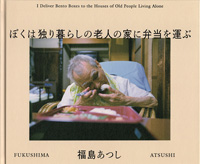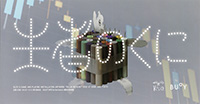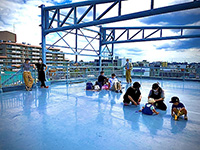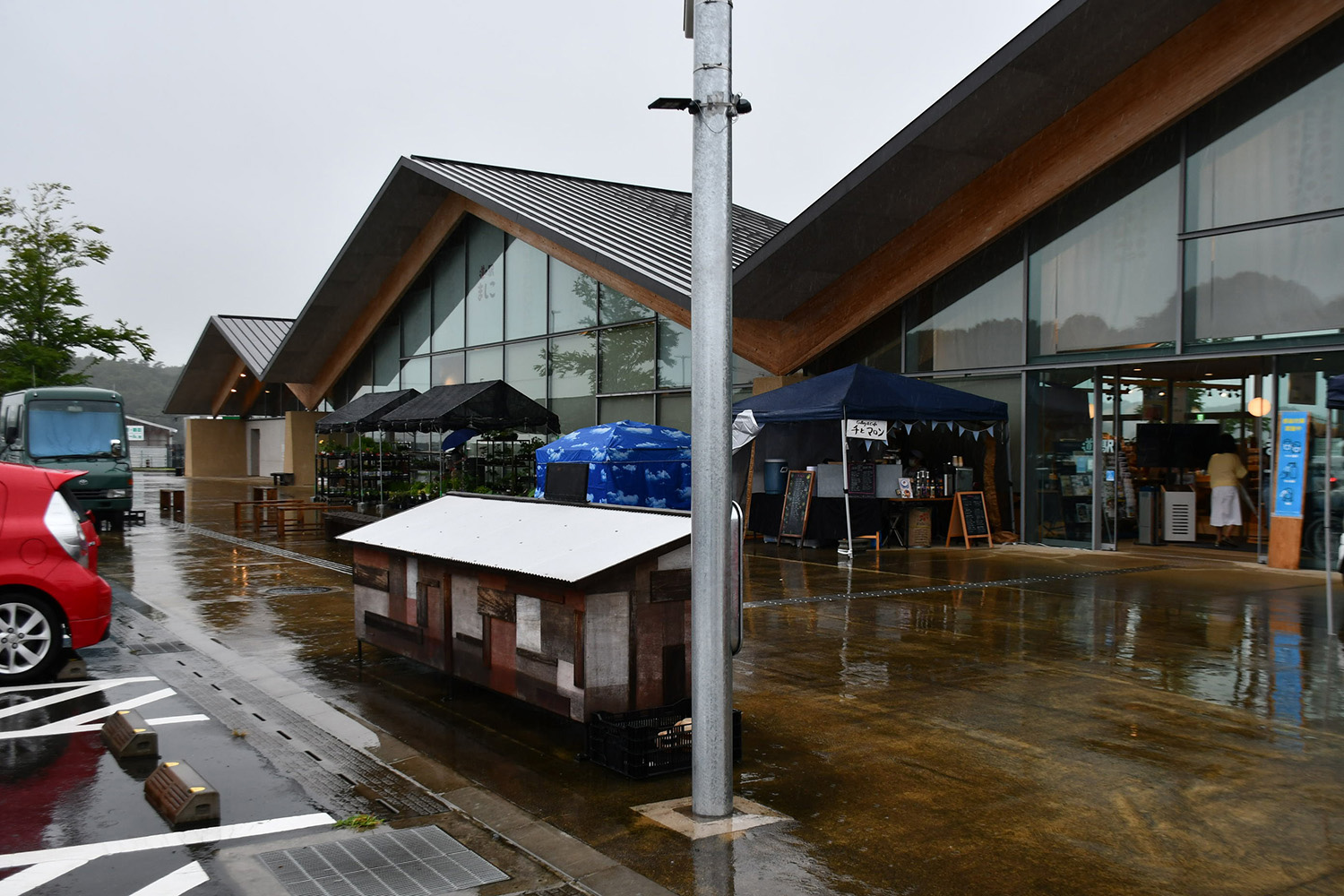 |
Picks is a monthly sampling of Japan's art scene, offering commentary by a variety of reviewers about current or recent exhibitions at museums and galleries around the country.
Note: As of 1 October, Japan is no longer under a state of emergency. Most museums and galleries are open, but some may still require reservations or have other anti-Covid measures in place. If you are planning a visit, please check the venue's website beforehand. |
 |
 |
|
|
 |
 |
| Atsushi Fukushima: I Deliver Bento Boxes to the Houses of Old People Living Alone |
| 10 August - 25 September 2021 |
IG Photo Gallery
(Tokyo) |
 |
|
Commemorating the publication of a photo collection by the same title, the show featured Fukushima's portraits of solitary elderly shut-ins and their living spaces. The photographer gained the trust of his subjects in the course of his job delivering boxed "bento" meals prepared for senior citizens. Fukushima's project can be taken as reportage of a sort on the social issues of an aging population, eldercare, and elderly people living -- and dying -- alone. But as he himself writes of his own conflicted feelings, the act of aiming one's lens or gazing at one's subject can induce a sense of guilt over the ethics, and the inherent violence, of the photograph and the gaze. In Fukushima's work, contradictions that most social documentaries paper over with a patina of self-justification burst forth unappeased.
|
|
|
 |
 |
 |
| OLTA: Land of the Living |
| 8 - 9 August 2021 |
Kobe Art Village Center
(Kobe) |
 |
|
Based on remote research conducted by the OLTA artist collective, this production consisted of two parts, the first an online game and the second a stage performance. For the former, players selected their roles from such characters as a miner, farmer, politician, geisha, and cow, through which they navigated a 3DCG environment replicating the geography of Hitachi, a city in Ibaraki Prefecture. Here they learned about the history of mining in Hitachi -- the harsh working conditions, the protocols of mining life, pollution, local culture, social movements and more. The climax was a parade of floats and puppets -- the famous Hitachi Furyumono festival, which is on the UNESCO Intangible Cultural Heritage list. A high point was the movement of the figures in response to the shouts of the players.
|
|
|

|
 |
 |
 |
 |
| Tasting the Pancake for Poison |
| 30 July 2021 - |
Shinjuku Piccadilly, other theaters
(nationwide) |
 |
|
Released only two months ago, this documentary has already stirred controversy for an unflattering portrayal of its subject, Prime Minister Yoshihide Suga. Analyzing his peculiar behavior are a bevy of talking heads ranging from journalists to former bureaucrats to politicians from both sides of the aisle. The occasional insertion of satirical animated shorts keeps viewers' attention from lagging and owes something to the style of the American documentarian Michael Moore. The filmmakers do not restrict their critique to the hapless soon-to-be ex-prime minister -- they are equally unsparing of the general public, whose political apathy earns it a cameo in one animated sequence as a flock of sheep.
|
|
|
 |
 |
 |
| Shigeki Nakano + Frankens: Part of it all |
| 18 July 2021 |
Ekoten
(Tokyo) |
 |
|
In this three-part production by the "NakaFra" troupe, Part 1 was an "introductory staging of the original work," followed by Part 2, "staging of a free mistranslation of the work," both performed in a bare-bones haikyo ("abandoned") studio space at Ekoten. The action then moved to the studio roof for Part 3, "+ members' everyday lives." The play, Edward Albee's The Zoo Story, is about an encounter between two men at a zoo; one is sitting on a park bench reading when a stranger begins haranguing him. Part 3, which incorporated glimpses of the actors' daily routines, took place against a backdrop of blue sky and urban skyline. Though its implicit message -- that the world extends far beyond our limited line of sight -- was nothing novel, the production gave it a refreshing twist.
|
|
|
|
|
|
|
|

|
 |
 |
|
 |
 |
| Architecture in Yamagata Prefecture |
Kanayama, Shinjo, Ginzan Onsen
(Yamagata) |
 |
|
The attractive mix of old and new in the Yamagata town of Kanayama is the result of years of careful urban planning. The city of Shinjo, for its part, boasts the YukinoSato ("Land of Snow") Information Center, which includes a 1937-vintage exhibition building with a quaintly steep peaked roof. The hot-spring resort Ginzan Onsen offers an impressive panorama of inns packed together along both banks of a narrow, twisting river. Of note is the Japanese-Western architectural blend in structures like the century-old Notoya Ryokan (1921). On the other hand, the minimalist design and delicate louvers of the Fujiya Inn (2006), the work of contemporary architect Kengo Kuma, provide a refreshing contrast to the other, more rococo hostelries.
|
|

|
 |
 |
 |
 |
 |
| Architecture in Ehime Prefecture |
Uwajima and elsewhere
(Ehime)
|
 |
|
The elegant keep of Uwajima Castle is no replica but the real thing, built in 1601 and still standing. Its entrance and three-tiered roof are festooned with gegyo ornaments and curved kara-hafu or triangular chidori-hafu gables. The city's Date Museum (1974), which attractively quotes the castle's stone walls in its façade, houses historical artifacts of the Date clan, which ruled Uwajima during the Edo period, and sits next door to the Date-built Tenshaen garden. Though less than a half-century old, the structure is already deteriorating and is slated for replacement with a new building designed by the ubiquitous Kengo Kuma, who won an open competition for the job.
|
|
|
 |
 |
 |
| Architecture in Akita Prefecture |
Kakunodate, Omagari, Yokote, Yuzawa
(Akita) |
 |
| Revisiting the historic town of Kakunodate for the first time in over two decades, this reporter was struck by the odd juxtaposition of the rows of old samurai houses with the postmodern mishmash of styles and eras in the Hirafuku Memorial Museum of Art (1988) and the Kakunodate Cherry Bark Craft Museum (1978), both designed by Hiroshi Oe. The Akita Prefectural Museum of Modern Art (1994) in Yokote is also a stunning structure of massive volumes, but the architectural program of the adjacent Akita Furusato Village entertainment and dining complex is, if anything, even more surreal. In neighboring Yuzawa I searched for and found Seiichi Shirai's Experimental Small House (1953), which had been moved here from Tokyo. Yuzawa is home to many Shirai creations, it turns out. |
|
|
|
|
|
|
 |
 |
| Kengo Kuma's Architecture in Sakai |
Sakai
(Ibaraki) |
 |
| Though a small town, Sakai is home to six buildings designed by Kengo Kuma. Two of them are part of the bustling Michi-no-Eki Sakai rest area: Cha-Gura Sakai Riverside Restaurant (2019), with its façade of wooden louvers at various angles, and Sakai Sand (2018), a sandwich shop with a traditional-style wood frame. Small, obscure (one might almost call them clandestine) projects like these are as much a hallmark of Kuma's oeuvre as big-ticket items like the National Stadium. Moreover, the cluster of Kuma works in Sakai has enjoyed a warm local welcome for its contribution to the town's prosperity.
|
|
 |
 |
 |
| Architecture in Mashiko and Kasama |
Mashiko and Kasama
(Tochigi and Ibaraki) |
 |
|
Designed by Mount Fuji Architects Studio, the Michi-no-Eki Mashiko rest area (2016) is a spacious, dynamic long-span structure of laminated wood. It is no easy task to do something this architecturally interesting with a roadside facility like the Michi-no-Eki franchise. Also worth a visit is Hiroshi Naito's Forest Mashiko (2002), a standout for the harmonious congruence of its curved layout and structure with the landscaping around it. Just across the prefectural border from Mashiko is Kasama, another locale known for ceramics. Here one finds Toyo Ito's House in Kasama (1981), a potter's combined studio and residence famed for the emphatic density of its design. Now the property of the city of Kasama, it is open to the public.
|
|
|
|
|
 |
|